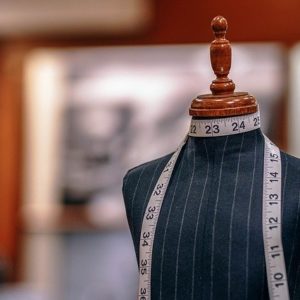Assume you’re a customer at a clothing store where you shop frequently. You buy a size medium jacket, expecting it to fit like a previous medium-sized jacket you purchased there. When you get home, however, the shirt does not fit as expected. You’re going to return the shirt, right? You might even be hesitant to return there in the future.
Assume you’re the importer of this jacket, and you’re dealing with a slew of product returns. You realize you did not include clear enough tolerances for jacket dimensions in your inspection criteria, resulting in jackets that do not meet your sizing requirements. Now you’re stuck with a subpar shipment of goods and a lasting quality crisis resulting from one overlooked detail during garment inspection.
Quality inspection has become an essential component of garment supply chains. With an inspection team on the ground, you can see exactly how your products look without having to visit the factory. However, to receive a genuinely accurate report on the quality of your order, you must specify your requirements and inspection steps. Let’s take a look at the five steps to garment inspection that your QC staff should always follow.
1. Check The Measurement Of The Garment
The most crucial function of any piece of clothing is that it fits the intended end user. Customers will frequently return a garment if it does not fit as expected, as any garment importer can attest. Ill-fitting garments cost you more than just money in the form of unsaleable merchandise. They can also cause long-term problems by causing once-loyal customers to abandon your brand, favouring one with better quality control.
Unlike mass manufacturing for other products, which frequently employs precise machinery and automation, garment production is still primarily done by hand. As a result, each piece of clothing has a more significant margin for error. When making garments, differences in dimensions are unavoidable. As a result, any thorough garment inspection should include precise dimension measurements.
Tolerances for garment measurement must be specified.
The consequences of a shirt sleeve that is 1/8 inch too long versus one that is 1/2 inch too long can be quite different. This is why you should always provide dimension tolerances to your supplier and QC staff to confirm the margin of error you’ll accept in your garments. QC inspectors will use these tolerances on the job to determine whether an item passes or fails inspection.
The tolerance can be specified for each area depending on how important it is for the garment fit. For example, you might set a lower tolerance for a skirt’s waistband and a slightly higher tolerance for the length of the side skirts. Before starting production, talk to your supplier to determine a reasonable tolerance for your products.
2. Inspect Functionality Of The Accessories (Closers, Buttons, Zippers etc.)
Most garments are more than just a few pieces of fabric sewn together. Instead, they include functional and decorative accessories such as buttons, snaps, zippers, ribbons, and elastic bands. A broken garment closure usually renders the garment unwearable and, as a result, unsellable. Most customers consider poor quality closures to be an annoyance and a source of frustration when attempting to repair them. Poor quality or attachment of these accessories can result in negative customer reviews and even physical harm to consumers.
Closures should be tested for durability and securely attached to the garment during the garment inspection process. The following are examples of standard tests:
Pull test: Using a pull gauge, pull at the accessory for 10 seconds to ensure it is securely attached to the garment.
Fatigue test: Use the accessory as intended for 50 cycles (e.g., button and unbutton 50 times) in rapid succession and confirm that it is still functional and that the garment is not damaged after testing.
Stretch elastic bands and straps to ensure proper elasticity and look for any breaks in elastic fibres or stitching.
Pull tests and fatigue tests should typically be performed on 5 pieces of each style of garment by QC professionals. Because the processes used to attach accessories to garments tend to be consistent throughout a shipment, it is usually unnecessary to perform these tests on every piece in the sample during the inspection. However, the quality of elastic materials used in the production of some garments can vary from piece to piece. As a result, when applicable, inspectors usually perform a stretch test on the total sample size.
3. Inspect Garment Packaging And Labeling
Most final inspections include a check for proper garment packaging and labelling. Adequate packaging ensures that your garments arrive at their destination in the same condition they left your supplier’s facility. In addition to inspecting packaging, the QC team should double-check garment labelling to ensure compliance with legal requirements.
Conformity with legal garment labelling requirements
The US government mandates that all garments sold in the country bear labels that include the following information:
Clothing fibre content that complies with the Textile Fiber Products Identification Act
Country of origin: the location of the item’s manufacture or the location of the most important manufacturing process.
Manufacturer identity: the company name or the Registered Identification Number (RN) of the manufacturer, importer, or other firm marketing, distributing, or otherwise handling the product
Care instructions following the Care Labeling Rule.
In addition, items made of wool, leather, or fur must adhere to additional labelling requirements. Importers of clothing who fail to meet any of the above conditions may face fines, delays, or refusal of goods at customs.
Clothing packaging inspection
Factory workers seal most garments in polybags before placing them in-retailer and shipping cartons for transit. Incorrectly packaged and sealed garments can allow dust and moisture to permeate and soil your products. In addition, failure to comply with legal requirements for suffocation warnings on polybags may result in fines.
Inspecting packaging for potential quality issues during transit and distribution entails verifying the following:
- Polybag sealing technique
- Size of polybag
- Labelling, barcodes, and appropriate price tags
- Printing and artwork for retail
- A variety of cartons
When ordering a variety of garment sizes, keep in mind how these garments will be sorted among shipping cartons. For example, the size ratio in each carton (how many garments in each size (small, medium, large, and extra-large) should be packed into each carton)? Consider the disappointment of receiving 20 extra-small garments and only three extra-large when you expected the same proportion of each size. You can avoid this issue by including variety in the specifications you provide to your supplier and inspection team.
4. Check The Fabric Quality With Approved Standard
For some products, such as promotional items, the quality of the input materials may not have a significant impact on salability. However, when it comes to garment manufacturing, fabric quality is a significant determinant of the finished product’s quality and salability. Product testing of your garments on-site and in a qualified laboratory ensures that your product meets your quality standards (related: GPT And FPT Testing).
GSM test
Grams per square meter (GSM) is a fabric density measurement used on garments and raw textiles. A GSM check can be performed by almost anyone with minimal training and equipment. Use a GSM cutter to cut a circular piece of fabric from a sample and then weigh it with an electric balance during the inspection. The measured GSM is then compared to the customer’s specifications.
If the GSM discovered during testing may be significantly lower than the required value. This is a “red flag” that your supplier may have used a lower quality fabric than you specified. As a result, consumers may find that the garment does not hold up to regular wear and washing.
5. Classification Of Defects
A critical step in any professional QC inspection for garments is a visual inspection for quality defects. Some flaws may go unnoticed by customers, while others are more likely to result in product returns. As a result, QC professionals typically categorize defects into three categories: minor, major, and critical.
The following are some of the common defects that garment importers may encounter:
- Uncut Thread (A thread that has not been trimmed)
- Broken Stitch
- Stains
- Needle Cut Or Hole
- Shade Variation (between pieces of the same style or different parts of the same piece)
- A Broken Needle Was Discovered In The Garment.
Because of the hazard it poses to the consumer, most garment importers agree that a loose needle left in a garment is a more severe issue than an untrimmed thread. However, the severity of other flaws may vary depending on your intended market and sale price. Setting defect classifications for garments before quality control inspection will help ensure that QC staff consider all defects following your specific quality standards
Zones of classification for defects in garments
Through zoning, garment importers typically classify defects based on the location of the defect on the garment. The majority of garments can be divided into two zones. Zone 1 (or zone A) refers to a part of the garment where the visual appearance is crucial. A defect in zone 2 (or zone B) would be less visible to consumers at first glance and thus less significant. Customers are more likely to return a shirt with a stain on the front than one with a similar stain on the sleeve’s underarm.
How do you know how many of each type of defect is acceptable in your order? It is your right as a customer to set the quality standard for your products. However, using a statistical sampling system such as AQL can assist you in determining the number of defects acceptable in a representative sample based on your standard.
Conclusion
In most product categories, inspections are standard practice. However, they are essential in the garments industry due to manual production processes that are more prone to human errors and mistakes. These garment inspection steps cover the fundamentals of quality control inspection for garments. You may discover that your quality requirements necessitate additional measures, such as different product testing (related: The 7 Tools of Quality).
Regardless of your specific requirements, you, your supplier, and your inspection team all must understand what is expected. All parties involved require immediate access to current specifications, inspection criteria, and any other quality documents. Make sure to keep your product specifications up to date after inspection to reflect any unexpected quality issues discovered during the inspection, as well as other changes.








Thanks for sharing, Great content